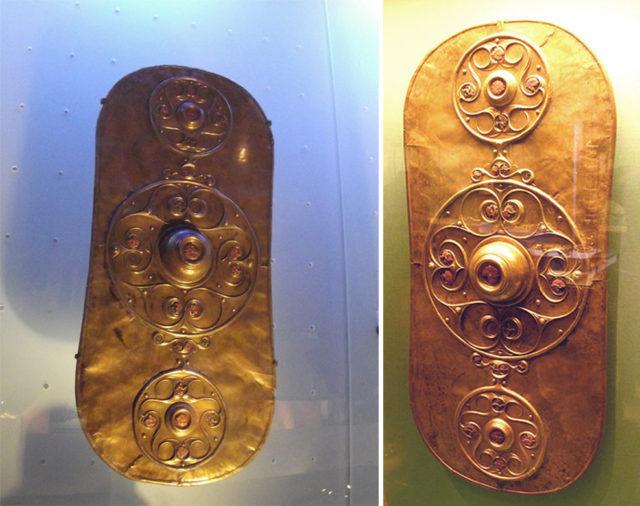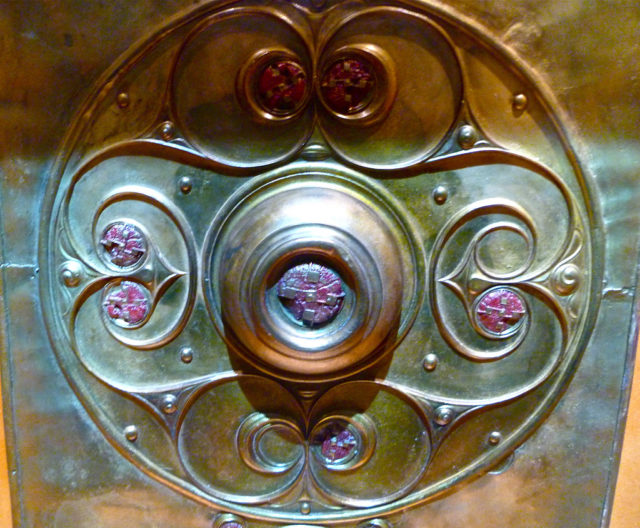The Battersea shield is an amazing work of art, the most famous piece of Celtic art ever found in Britain. This magnificent Iron Age shield was dredged up from the Thames shortly before 1857, during excavations for the predecessor of Chelsea Bridge, and it is probably made in eastern England circa 350-50 BC, though later dates up to the early 1st century AD have previously been suggested.
In the same area, workers also found large quantities of Roman and Celtic weapons and human skulls.


The Battersea Shield is a sheet of bronze covering a wooden shield (now vanished) and is made of several pieces, held together with bronze rivets and enclosed in a binding strip.
The decoration is in the typically Celtic La Tène style, consisting of circles and spirals, made using the repoussé technique, emphasized with engraving and stippling.

The shield has twenty-seven red glass ‘enamel’ framed studs in four different sizes, the largest set is located at the center of the boss. Even the handle of the Battersea shield was very ornate.
It is one of the most significant pieces of ancient Celtic military equipment found in Britain.


However, because the bronze sheet is so thin and fragile, and too short to provide sensible protection, archaeologists suggest that it was actually never used in battle and was more probably an offering; objects such as shields and swords were sometimes thrown into rivers as offerings to a god.
The shield is on display in the British Museum, while a replica is housed in the Museum of London.
